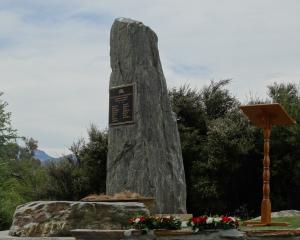
Something of this kind has been anticipated despite the absence of any definite information respecting the destination of the two troopships which left Wellington little more than a fortnight ago.
Senator Millen's announcement last week of the arrival of the expedition in company with Australian troops at Noumea and its departure thence under a convoy of French and British cruisers came only in time to pave the way for the very satisfactory news that arrived yesterday.
There may have been those who were growing rather anxious over the absence of tidings of the expedition. It is agreeable to have this uncertainty now relieved and to know that the force reached its destination in perfect safety in such excellent company.
Another cause for satisfaction lies in the unopposed landing of the dominion troops. When life is being sacrificed on so wholesale a scale on the Continent we can be thankful for a bloodless victory such as this in the Pacific.
The German surrender was no doubt in all the circumstances thoroughly discreet. The presence of the hostile cruisers would demonstrate the folly of resistance.
The Germans have a force of trained native soldiery in the islands, but its numerical strength is uncertain. If the seizure of German Samoa has been an easy accomplishment, we may take it that this has been due to the soundness of the preparations made to that end.
German Samoa comprises eight out of the fourteen islands in the archipelago, the others belonging to the United States. The whole population of the group has been estimated as about 36,000, among whom in 1913 there were 329 German and 132 British settlers.
The successful occupation of Samoa has in some degree removed the necessity for secrecy regarding the movements of the first section of the New Zealand force.
The troopships carrying the force left Wellington Harbour on the morning of August 14, and an account of the subsequent movements of the force was given this evening by the Minister of Defence.
Continuing the former precautions, Mr Allen said, it was inadvisable to indicate the number or class of the warships which participated in the operations.
According to the advice received by his Excellency the Governor Apia was surrendered at 10 a.m. on August 29 (western time). As time in Samoa is 23 hours later than New Zealand time the surrender occurred according to the New Zealand time, at 10.30 a.m. on Sunday.
Mr Allen remarked that the ultimate disposition of the island was a matter for decision by the Imperial authorities, but New Zealand might have something to say about it.
''We have simply done our duty as part of the Empire in carrying out the task allotted us.''
He added, ''and now our duty is to hold Samoa for the Imperial Government. It is impossible to say how long the New Zealand force will be required to stay there.''
- ODT, 1.9.1914.

